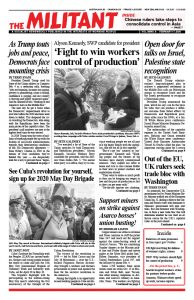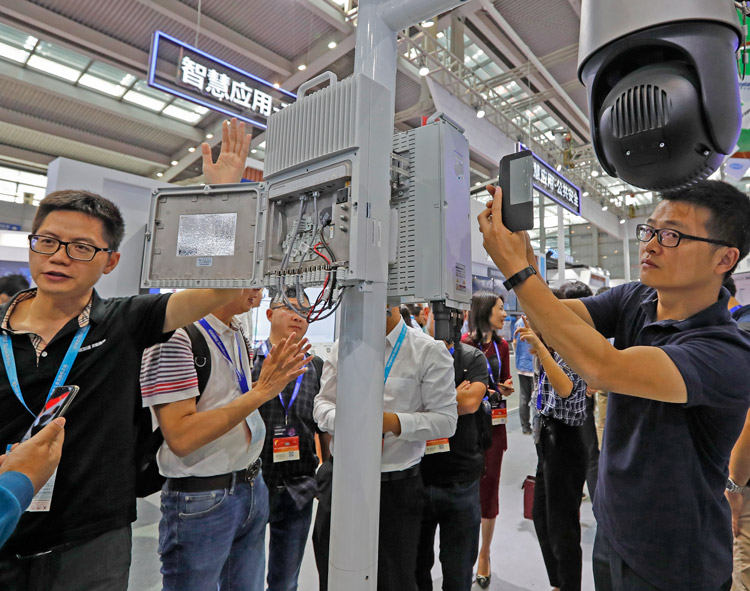While big-business press headlines have focused on the trade disputes and agreements between Washington and Beijing, the course of the rulers in China has become increasingly clear. Armed with a long view, they are focused on building their own empire in Asia linked by their Belt and Road Initiative without engaging in a fight with the U.S. rulers for world supremacy, for now.
This is most clearly seen in how the state bureaucracy in China is pushing its ambitious “Made in China 2025” policy. At the end of last year, Beijing announced it would remove all foreign technology from every state office and public institution by 2022. As part of the goal of developing “secure and controllable” technology, up to 30 million computers will be replaced.
In two years, Beijing insists, no workstations that are not made in China and based on Chinese programming will be permitted to operate in government offices or the vast network of state-linked enterprises.
The aim is to become completely self-reliant in making new-generation wireless and internet telecommunications gear; artificial intelligence, automation and robotics; synthetic materials; as well as aerospace, maritime, biopharmaceutical and other high-tech manufacturing, key to a modernized capitalist economy — and military — of the future.
Beijing is focusing on pouring billions into research and development on Chinese equipment and technology. It offers a wide range of enticements — both legal and otherwise — to overseas Chinese scientists and others to join its push to become self-sufficient in science and technology.
The goal of China’s bureaucratic rulers isn’t to use this shift to challenge Washington in Europe and the U.S. It’s to have the equipment, software and resources to draw neighboring capitalist rulers into a virtually self-contained Asian economic cooperation that they dominate, linked by the belt and road system.
Spreading world ‘deglobalization’
For years, pundits pointed to a world more and more integrated and interdependent. They predicted lowering of trade barriers and increased capital flows across borders were the future.
But it has become clearer that rivalry between capitalist nation states in the age of imperialism is far more powerful than so-called globalization. Deglobalization is spreading worldwide.
In the 1990s, the U.S. rulers, blinded by the illusion that the implosion of the USSR and Eastern Europe meant they “had won the Cold War,” thought they had free rein to lord over a new boom for imperialist expansion and profit. The 2008 financial panic sharply revealed how wrong they were.
Instead of becoming a new, giant state, the European Union is being torn apart. The U.K. has headed out, and other capitalist rulers who have suffered at the dictates of Berlin and Paris, the two strongest European powers, are considering similar moves. “Emerging” nations — from Brazil to India and Russia — have yet to emerge.
And so-called worldwide organizations — from the United Nations to the World Trade Organization — have less and less to say about relations between competing capitalist ruling classes.
In this framework, both Washington and Beijing have reached a new trade deal that lifted the recent series of tit-for-tat tariffs.
For decades the Chinese rulers drove a huge wave of industrialization that drew hundreds of millions of peasants into mushrooming cities. The bureaucratic state acted to police the proletarian workforce intensely exploited by foreign and native capital in the factories. It presided over explosive capitalist growth as imperialist bosses set up shop to take advantage of cheap labor. In return for access to a burgeoning mass market, foreign investors were forced to allow Chinese access to advanced technology.
Now the Chinese rulers are poised to take another step.


